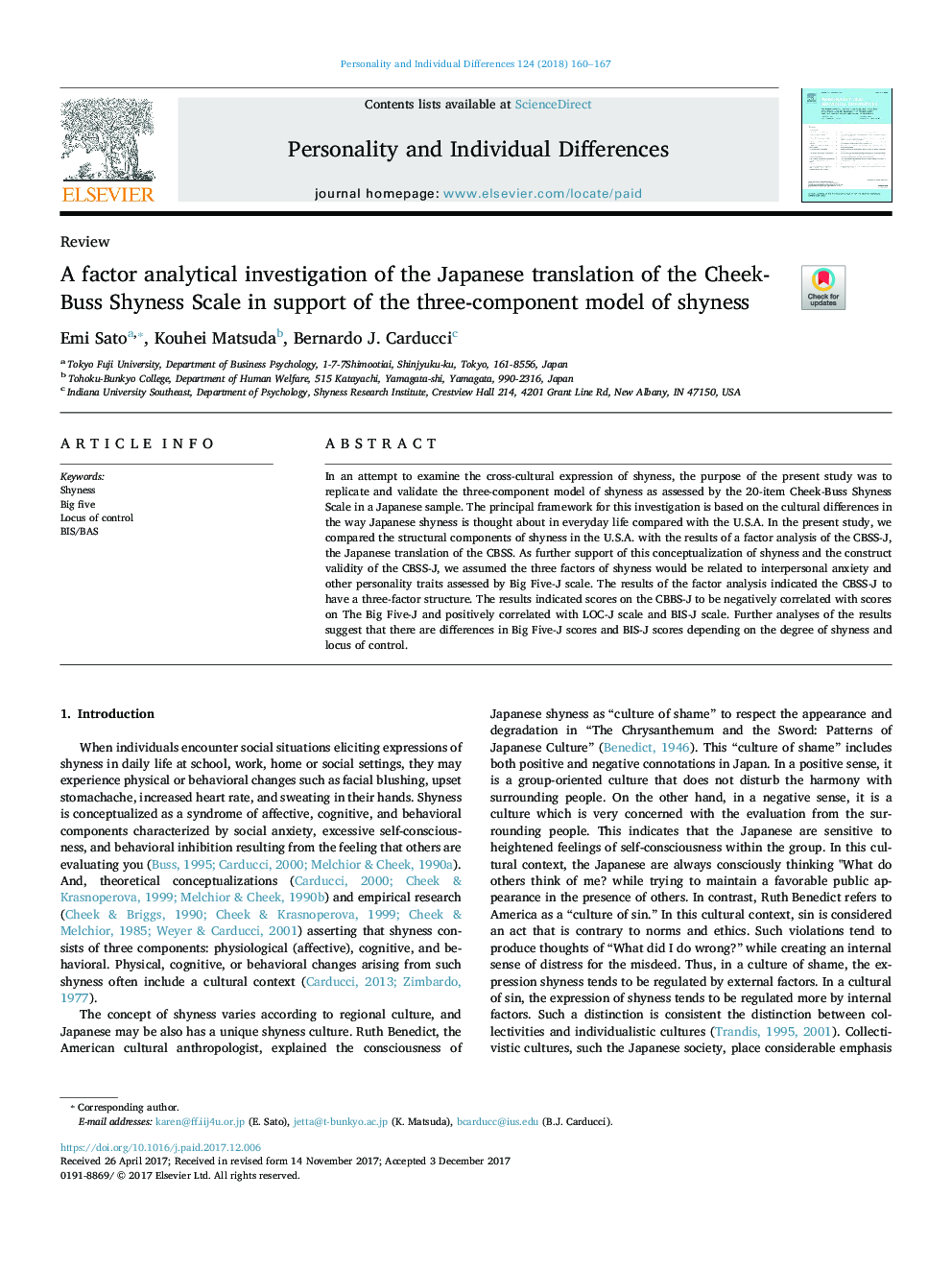| Article ID | Journal | Published Year | Pages | File Type |
|---|---|---|---|---|
| 7249051 | Personality and Individual Differences | 2018 | 8 Pages |
Abstract
In an attempt to examine the cross-cultural expression of shyness, the purpose of the present study was to replicate and validate the three-component model of shyness as assessed by the 20-item Cheek-Buss Shyness Scale in a Japanese sample. The principal framework for this investigation is based on the cultural differences in the way Japanese shyness is thought about in everyday life compared with the U.S.A. In the present study, we compared the structural components of shyness in the U.S.A. with the results of a factor analysis of the CBSS-J, the Japanese translation of the CBSS. As further support of this conceptualization of shyness and the construct validity of the CBSS-J, we assumed the three factors of shyness would be related to interpersonal anxiety and other personality traits assessed by Big Five-J scale. The results of the factor analysis indicated the CBSS-J to have a three-factor structure. The results indicated scores on the CBBS-J to be negatively correlated with scores on The Big Five-J and positively correlated with LOC-J scale and BIS-J scale. Further analyses of the results suggest that there are differences in Big Five-J scores and BIS-J scores depending on the degree of shyness and locus of control.
Related Topics
Life Sciences
Neuroscience
Behavioral Neuroscience
Authors
Emi Sato, Kouhei Matsuda, Bernardo J. Carducci,
